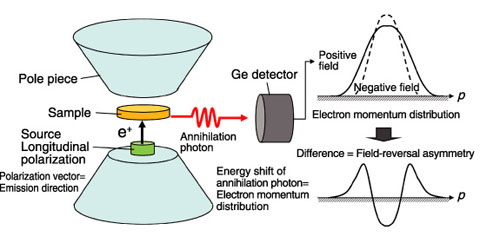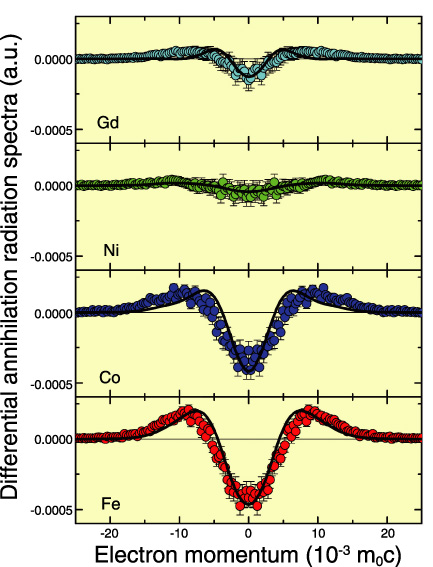
Fig.6-5 Schematic diagram of annihilation radiation spectrum measurements

Fig.6-6 Differential annihilation radiation spectra of Fe, Co, Ni, and Gd samples
Conventional electronic devices are based on electric current flow. Recently, so-called spintronics devices based on electron spins have been extensively studied. It is desirable for the development of new methods for the investigation of electron spins to accompany discoveries of novel spin-related phenomena. We are currently trying to obtain a highly spin-polarized positron beam for use as a probe for studying spin-related phenomena.
Although it was very difficult to polarize positrons, we focused on highly spin-polarized positrons emitted from a 68Ge-68Ga source. In this study, we produced a 68Ge-68Ga source through proton bombardment and used it for the investigation of the spin states of ferromagnets. Fig.6-5 shows a schematic diagram of annihilation radiation spectra measurements performed by using the highly spin-polarized positron source developed in this study. The annihilation photon was emitted when the spin-polarized positrons were annihilated with the excess electron spin in the ferromagnets in a magnetic field. The energy of the annihilation photon was Doppler shifted because of electron motion. Spin-up positrons preferentially annihilate with spin-down electrons. The electron-spin polarization of ferromagnets can be changed by magnetic field reversal. Thus, the annihilation radiation spectra are modulated upon magnetic field reversal. To highlight this change, the differential annihilation radiation spectra under positive and negative magnetic fields are displayed in Fig.6-6. We found a clear magnetic field effect on the annihilation radiation spectra. We also found that the strength of the magnetic field effect on the spectrum is related to the effective magnetization. Thus, spin-polarized positron annihilation will be useful for the study of the electron spin state associated with ferromagnets.
In the near future, we intend to work toward producing an energy-tunable highly spin-polarized positron beam. We intend investigating spin-related phenomena near surfaces, such as the spin-Hall effect. Positron annihilation spectroscopy is a powerful technique for detecting vacancy defects. Further, spin-polarized positron annihilation spectroscopy can also be used for the study of vacancy-induced magnetism.